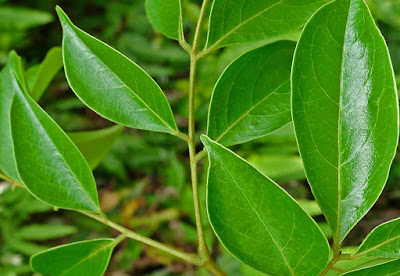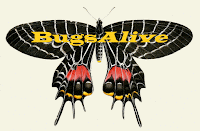Polyura nepenthes - the Shan Nawab
Written and photographed by Tim Stratford
 |
| Doi Suthep-Pui National Park, Chiang Mai, Thailand. 450m a.s.l. |
Introduction
Family: Nymphalidae - Subfamily: Charaxinae - Genus: Polyura - Species: nepenthes
Polyura nepenthes is a medium-large butterfly that has a wingspan of 70-80mm. Although both sexes look similar the female is generally slightly larger than the male. The only other difference is that the abdomen of the male is totally white whilst that of the female is white on top and black or brown underneath. They are strong fliers and spend much of their time flying around the tree tops and usually have a favourite resting spot to where they return time and again. The males are highly territorial and will fight off any other male that encroaches on their 'patch'. They only come down to feed and like other Charaxinae species do not usually visit flowers, preferring instead to feed on animal dung, rotting fruit, and plant sap. They seem to be particularly fond of the sap from citrus trees. The males also avidly puddle for minerals on damp ground, seepages, and stream banks. When this species settles it usually closes its wings and only rarely opens them to bask.
Distribution & Seasonality
Distribution is rather restricted within a corridor stretching from Myanmar in the west via Thailand, Laos, and northern Vietnam to southern China in the east. They fly for most of the year, depending on location, but there are maybe only three or four generations as the lifecycle between egg and the emergence of a new adult is quite long. There appears not to be any seasonal variation in the appearance of this species. Habitat is around streams within and on the edge of moist evergreen and deciduous forest, usually in hilly areas.
Family: Nymphalidae - Subfamily: Charaxinae - Genus: Polyura - Species: nepenthes
Polyura nepenthes is a medium-large butterfly that has a wingspan of 70-80mm. Although both sexes look similar the female is generally slightly larger than the male. The only other difference is that the abdomen of the male is totally white whilst that of the female is white on top and black or brown underneath. They are strong fliers and spend much of their time flying around the tree tops and usually have a favourite resting spot to where they return time and again. The males are highly territorial and will fight off any other male that encroaches on their 'patch'. They only come down to feed and like other Charaxinae species do not usually visit flowers, preferring instead to feed on animal dung, rotting fruit, and plant sap. They seem to be particularly fond of the sap from citrus trees. The males also avidly puddle for minerals on damp ground, seepages, and stream banks. When this species settles it usually closes its wings and only rarely opens them to bask.
Distribution & Seasonality
Distribution is rather restricted within a corridor stretching from Myanmar in the west via Thailand, Laos, and northern Vietnam to southern China in the east. They fly for most of the year, depending on location, but there are maybe only three or four generations as the lifecycle between egg and the emergence of a new adult is quite long. There appears not to be any seasonal variation in the appearance of this species. Habitat is around streams within and on the edge of moist evergreen and deciduous forest, usually in hilly areas.
 |
| Close-up of a male puddling for minerals. Photo : Chiang Dao Nature Sanctuary, Chiang Mai, Thailand. 540m a.s.l. |
Lifecycle
The lifecycle of this species is quite interesting and it is much longer than many other butterfly species. At the beginning of the lifecycle the adult female lays her eggs singly on the upperside of a leaf on the host plant. She returns several times depositing around five or six eggs in total on one leaf. The eggs are barrel-shaped and yellowish in colour. The egg hatches in approximately 5 days and the emerging larva consumes the entire eggshell before starting to feed on the leaf. The larva at that time is around 5mm long, pale green in colour and has two pairs of horns on its head which is characteristic of other Charaxinae species. These horns, especially in the later instars, are used to deter predators. There are five instars lasting more than 70 days in total with the final instar larva reaching a length of around 60mm. After each moult the larva consumes its old skin before continuing to feed on the leaves of the host. The pupation period that follows lasts up to 17 days.
The total time from egg to adult is around 75-90 days and the duration of each stage is as follows. All figures are approximate :-
- Egg : 5 days
- Instar 1 : 8 days
- Instar 2 : 10 days
- Instar 3 : 12-14 days
- Instar 4 : 10 days
- Instar 5 : 16-28 days
- Pupa : 15-17 days
Host Plants
Known larval host plants are Ventilago leiocarpa (Rhamnaceae) and Archidendron lucidum (Mimosaceae) but there may also be others that have yet to be recorded. Archidendron lucidum is a small tree 2-10m high growing in sparse forest up to 1400m a.s.l. and Ventilago leiocarpa is an evergreen climbing shrub or liana found in the same kind of forest and at similar altitudes.




